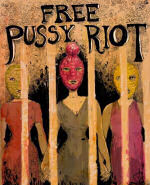|
Aviation
Home
Morning Glory
Morning Glory Waves
Aircraft
Bell 47
Wanaka Warbirds 2006
Large Scale Model Aircraft
B24 at Moonlight Creek
B24 Manual
Gorsky
UFOs

Free Pussy Riot Three performance artists jailed by Vladimir Putin desperately need your help. Support these brave women! | ||||||
